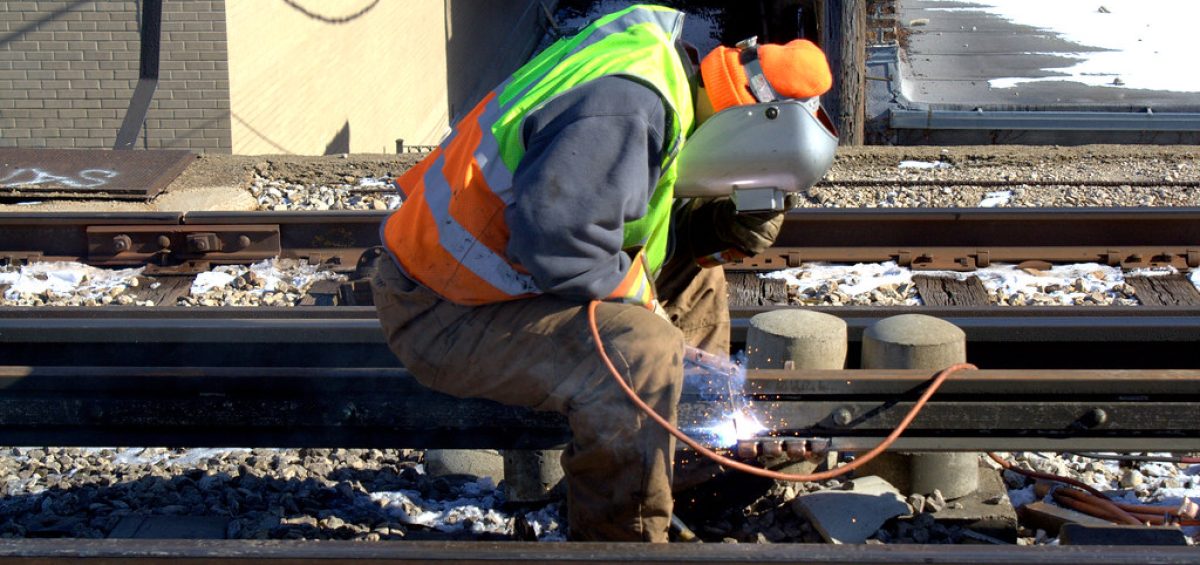Railroad welding forms the backbone of modern rail infrastructure, ensuring the safety and longevity of track systems that transport millions of passengers and tons of freight daily. As a critical component of RSS Infrastructure maintenance and development, proper welding techniques are essential for creating continuous welded rail (CWR) that can withstand extreme temperatures, heavy loads, and constant use.
Fundamentals of Railroad Welding
Railroad welding requires specialized knowledge and techniques that differ significantly from conventional welding practices. The process involves joining rail sections to create seamless tracks that reduce maintenance requirements and provide smoother train operations. Modern RSS infrastructure relies heavily on these welding techniques to maintain the integrity of rail networks worldwide.
The most common types of railroad welding include
Thermite welding remains the most widely used method in the field, particularly for joining existing rails and making repairs. This process involves a chemical reaction between aluminum and iron oxide, producing temperatures exceeding 4,000°F to create a strong, reliable joint.
Flash-butt welding, primarily used in rail production facilities and some mobile units, uses electrical resistance to heat the rail ends before forcing them together under high pressure. This method produces some of the strongest welds available in railroad applications.
Essential Safety Considerations
Safety in railroad welding extends beyond typical welding precautions. Welders must consider:
Temperature monitoring is crucial as rail expansion and contraction can significantly impact weld integrity. Welders must carefully calculate and adjust for ambient temperature conditions during the welding process.
Track circuit considerations require special attention since welded joints must maintain proper electrical conductivity for signaling systems. This aspect of RSS infrastructure demands precise execution and testing of each weld.
Advanced Welding Techniques for Modern Rail Systems
Thermite Welding Process
The thermite welding process begins with precise rail alignment and gap measurement. Welders must clean the rail ends thoroughly and preheat them to ensure proper fusion. The thermite portion involves:
Proper mold installation around the rail ends creates a chamber for the molten metal. This step requires extreme precision to prevent leakage and ensure proper joint formation.
The thermite reaction occurs in a crucible mounted above the mold. When initiated, the reaction produces molten steel that flows into the mold, joining the rail ends together.
Quality Control and Testing
Every railroad weld undergoes rigorous inspection and testing to ensure it meets strict safety standards. Modern RSS infrastructure demands multiple quality control measures:
Ultrasonic testing helps identify any internal defects or discontinuities within the weld. This non-destructive testing method provides detailed information about weld integrity.
Profile testing ensures the running surface matches the existing rail profile perfectly. Even minimal variations can lead to increased wear and potential safety issues.
Environmental Considerations and Weather Impact
Weather conditions significantly influence railroad welding success. Welders must account for:
Temperature differentials between day and night can affect rail expansion and contraction. Proper calculation of neutral temperature helps prevent track buckling or pulling apart.
Moisture control becomes crucial during welding operations. Precipitation and humidity can compromise weld quality, requiring additional preparations and sometimes scheduling adjustments.
Seasonal Welding Adaptations
Different seasons present unique challenges for railroad welding:
Summer welding requires careful attention to rail expansion and proper cooling procedures. Welders must often work during cooler hours to maintain optimal conditions.
Winter welding demands additional preheating and careful moisture control to prevent hydrogen embrittlement and other cold-weather-related issues.
Maintenance and Repair Protocols
Regular Inspection Requirements
Systematic inspection of welded joints ensures early detection of potential issues. RSS infrastructure maintenance programs typically include:
Visual inspections occur regularly to identify surface defects or signs of deterioration. Trained inspectors look for specific indicators of weld stress or failure.
Geometric monitoring helps track any changes in rail alignment or surface profile that might indicate weld problems.
Emergency Repair Procedures
Quick response to weld failures is essential for maintaining safe rail operations. Emergency procedures include:
Temporary repairs might use joint bars until permanent welding can be performed. These temporary solutions must meet specific safety standards.
Permanent repairs require careful planning and execution, often performed during scheduled maintenance windows to minimize service disruption.
Future Developments in Railroad Welding
The field of railroad welding continues to evolve with new technologies and techniques:
Automated welding systems are becoming more sophisticated, offering improved consistency and reduced human error. These systems integrate with existing RSS infrastructure monitoring systems.
Digital monitoring and documentation systems help track weld performance over time, enabling better predictive maintenance and quality control.
Innovation in Welding Materials
New materials and compounds are being developed to improve weld strength and longevity:
Modified thermite compositions provide better flow characteristics and stronger joints. These innovations help address specific challenges in different operating environments.
Advanced rail steel alloys require adapted welding techniques, driving continuous improvement in welding procedures and materials.
Conclusion
Railroad welding remains a critical element of modern RSS infrastructure, requiring specialized knowledge, precise execution, and continuous adaptation to new technologies and requirements. Success in this field demands a thorough understanding of both traditional techniques and emerging innovations, always prioritizing safety and reliability in rail operations.
The future of railroad welding looks promising, with new technologies and materials continuing to improve the efficiency and reliability of rail systems worldwide. As RSS infrastructure continues to expand and evolve, the importance of proper welding techniques and maintenance protocols will only increase, ensuring safe and efficient rail transportation for generations to come.

